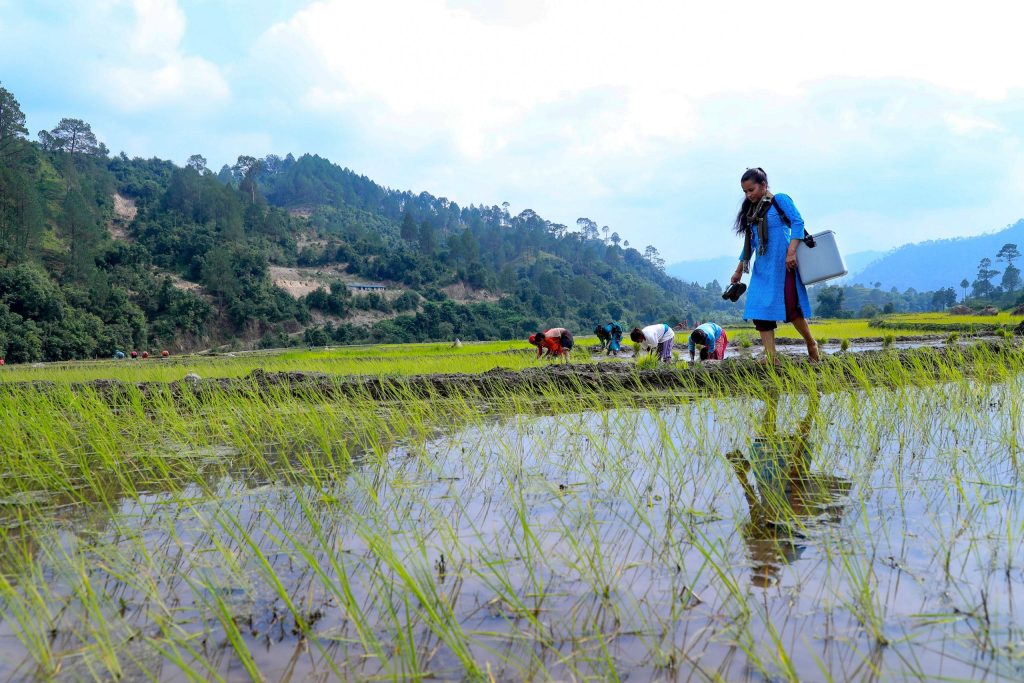
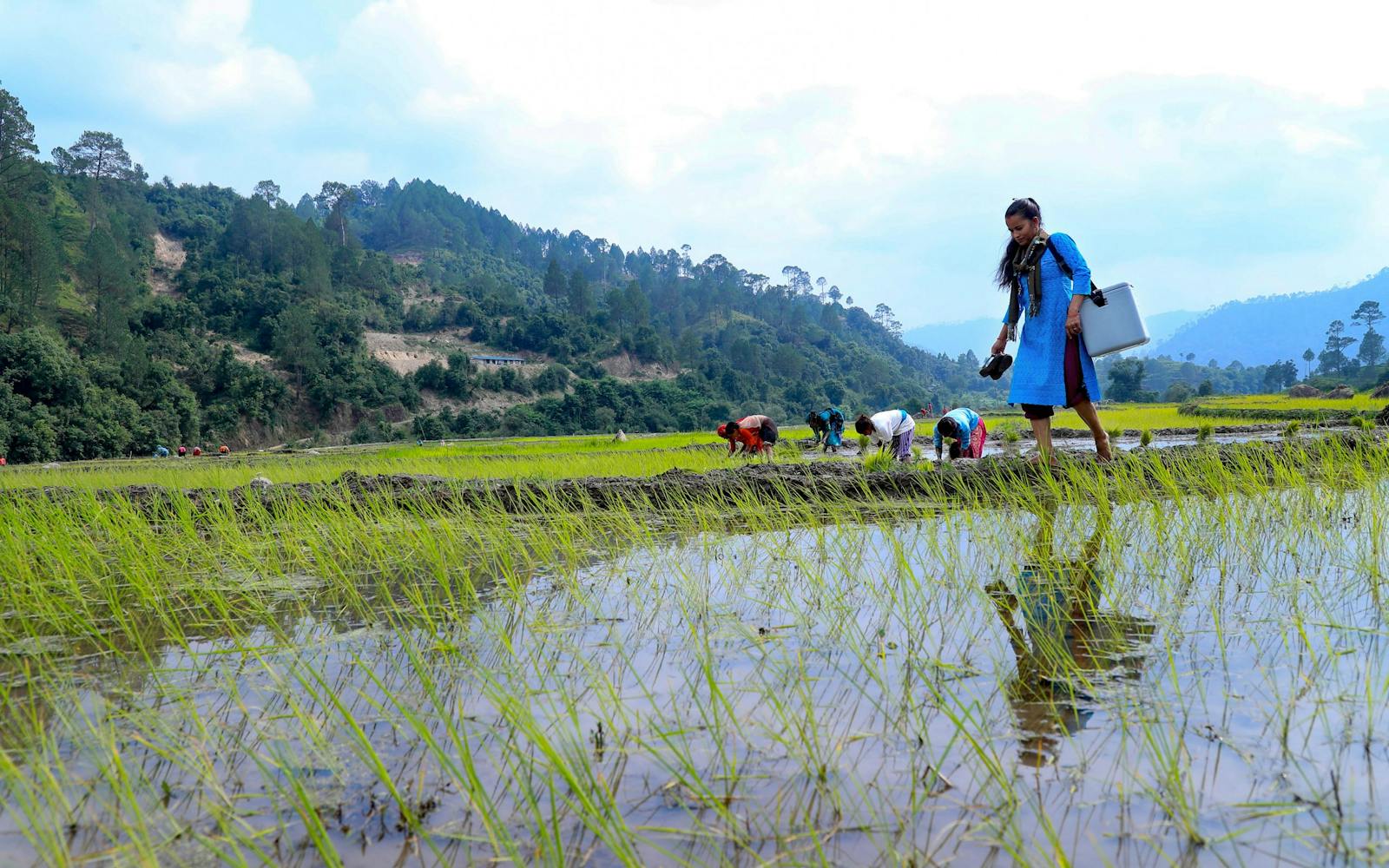
well being worker Basanta Malla walks throughout rice paddies in Jorayal Rural Municipality, in Doti District in Nepal’s distant far west, with a vaccine provider en path to a group outreach session to vaccinate kids underneath the routine vaccination program. A key situation inside the success of Nepal’s vaccination packages has been the efficient utilization of feminine group well being Volunteers (FCHVs), who’re held in extreme regard inside the agricultural communities they dwell in and who assist to assemble notion in vaccines. photograph: Laxmi Prasad Ngakhusi / UNICEF
The COVID-19 pandemic derailed progress on meeting world well being goals that was already too gradual. And now, amid a collection of compounding crises, time is working out to shore up our defenses in opposition to current and future well being threats. world leaders could be smart to double down on investments in world well being now, to shield and velocity up progress earlier than it’s too late.
in accordance with The Sustainable enchancment goals Report 2022, the COVID-19 pandemic worn out 4 years of progress on poverty eradication and pushed ninety three million people into extreme poverty. It additionally disrupted important well being companies and compelled 24 million college students out of school.
The window of alternative is quickly closing to forestall further setbacks on the SDGs and shield the packages that maintain our communities healthful, prosperous, and guarded. As we method 2023 — the midway level to the 2030 deadline for the SDGs — time is working out for world leaders to make a down cost on a extra healthful and safer future for all.
World leaders are understandably preoccupied with interconnected and refined crises, from local climate change to meals insecurity to battle. however as a consequence of the shockwaves of this pandemic proceed to reverberate throughout the globe, we should reckon with actuality: Our collective well being is foundational to every facet of life and integral to all 17 SDGs. we will now not afford to underfund the very packages, people, and assets that work to protect us healthful and cease future well being threats.
Political leaders can take two steps to finish this pandemic and avert future pandemic threats.
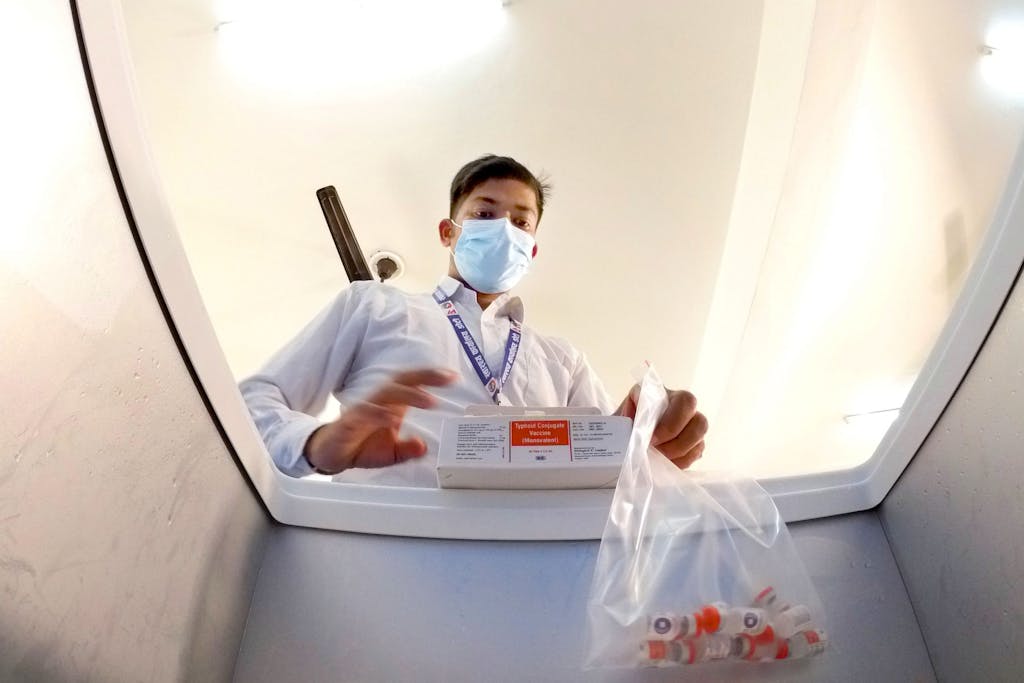
chilly chain assist staff Deepak Bohara packs supplies of the typhoid conjugate vaccine (TCV) on the district-diploma vaccine chilly retailer inside the federal authorities of Nepal’s District well being office in Doti District. In April 2022, the federal authorities of Nepal launched the TCV into the nation’s routine immunization programme with assist from Gavi, the Vaccine Alliance, WHO, UNICEF and fully different companions. photograph credit rating: Laxmi Prasad Ngakhusi / UNICEF
1. Pandemic-Proof the World to be sure that a extra healthful, safer Future
The COVID-19 pandemic is estimated to value the worldwide financial system $12.5 trillion and would possibly proceed to set off financial aftershocks for the subsequent decade, in accordance with the worldwide monetary Fund. contemplating these prolonged-time period impacts, financing new options should transcend brief-time period political cycles and re-think about pandemic prevention and preparedness as an funding, pretty than an expense.
extreme-earnings nations particularly have radically underinvested inside the kinds of options that might have massively curbed the trajectory of the current pandemic. for event, latest fashions from The Lancet Infectious illnesses counsel that forty five% of deaths in low-earnings nations might have been averted if the 20% vaccination safety goal had been met by the tip of 2021.
Many considerate and effectively-educated experiences and extreme-diploma ideas on the best method to deal with the failings of the current pandemic have already been developed and are being partially superior by way of intergovernmental processes. These embrace the event of a mannequin new potential pandemic accord, strengthening the current worldwide well being guidelines, and the institution of a fund for pandemic preparedness, accepted in late June by the World financial institution’s Board of govt directors.
nations have financed the worldwide response to COVID-19 largely by way of official enchancment assist (ODA), however that has confirmed to be insufficient to deal with the ever-widening hole between well being wants and assets. that is one purpose that the worldwide response to the COVID-19 vaccination targets set by the World well being group (WHO) has been so gradual.
If pandemic preparedness and response funding continues to be looking on ODA, it would probably be topic to the whims of brief-time period political pursuits and compelled to compete for funding with fully different critically important well being and enchancment wants. subsequently, all nations, as effectively as to foremost world donors, want to allocate further pandemic prevention, preparedness, and response funding exterior of regular ODA commitments or we’re destined to repeat the errors of the COVID-19 pandemic.
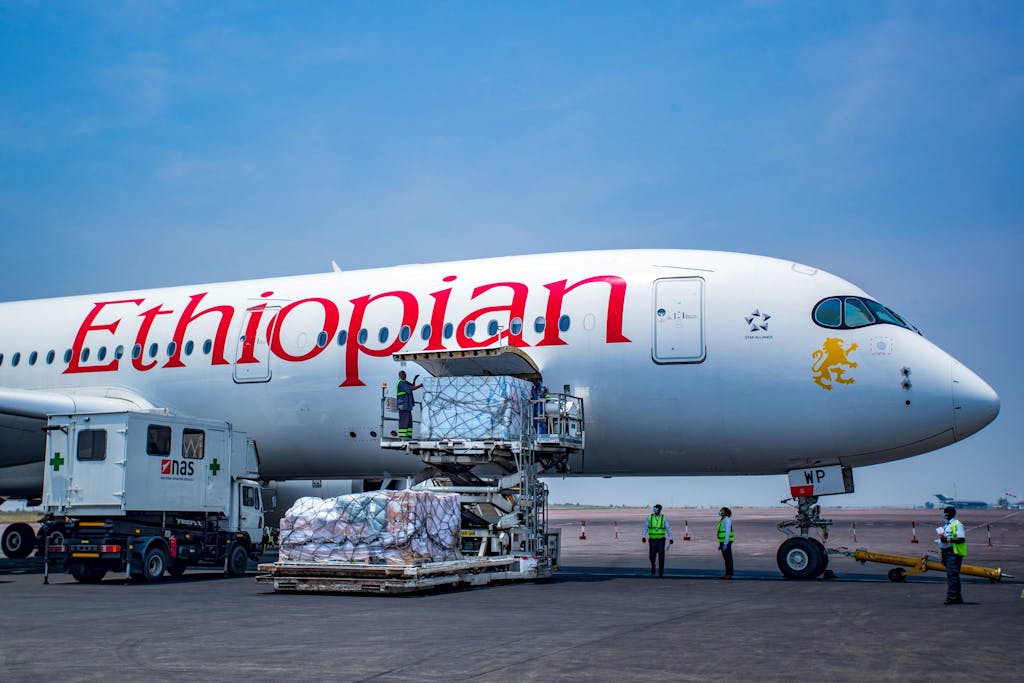
A batch of 4 hundred,000 doses of the Sinovac COVID-19 vaccine was acquired in September 2021 at N’Djili worldwide Airport inside the Democratic Republic of Congo. This donation from the federal authorities of the people’s Republic of China is a ingredient of the bilateral agreements between the two nations and goals to be sure that equitable entry to coronavirus vaccines. photograph credit rating: Josué Mulala / UNICEF
2. maintain Investments in confirmed Collective movement
now we have proof that investments in multilateral well being partnerships are essential to addressing the epidemics and well being threats of right now, whereas additionally advancing the purpose of well being for all. Over the previous 20 years, the world has made excellent progress in stemming the tide of main infectious killers of youngsters and youthful people, thus rising world life expectancy by six years between 2000 and 2019.
A key situation on this progress has been the willingness of nations, donors, civil society, and fully different actors to pool assets, expertise, and expertise in the direction of frequent goals, collectively with by way of the institution of Gavi, the Vaccine Alliance; the worldwide Fund to fight AIDS, Tuberculosis and Malaria; the world Polio Eradication Initiative (GPEI); and fully different foremost world well being partnerships.
Underpinned by the technical, procurement, and supply expertise of the UN system, particularly WHO and the United Nations kids’s Fund (UNICEF), these multilateral partnerships have provided extreme returns, saving 1000’s and 1000’s of lives. Sustaining these investments will permit communities and nations to enhance the packages and infrastructure required to fight the epidemics of right now and tomorrow.
After two years of extreme disruptions to important well being companies, world well being disparities right now are wider than they’ve been in latest historic previous. Some 25 million kids missed out on essential vaccines in 2021, 6 million elevated than earlier than the COVID-19 pandemic in 2019. almost all kids who’ve by no means acquired a dose of any vaccine dwell in low- and center-earnings nations, particularly in Africa and Southeast Asia.
equally, the COVID-19 pandemic has reversed years of progress on HIV, TB, and malaria. in contrast with 2019, HIV testing fell by 22% and the quantity of people being dealt with for TB fell by elevated than 1 million in 2020. For the foremost time in over a decade, TB deaths elevated in 2020. The disruption of malaria prevention, prognosis, and remedy as a outcomes of COVID-19 in 2020 prompted a 12% enhance in world deaths from malaria.
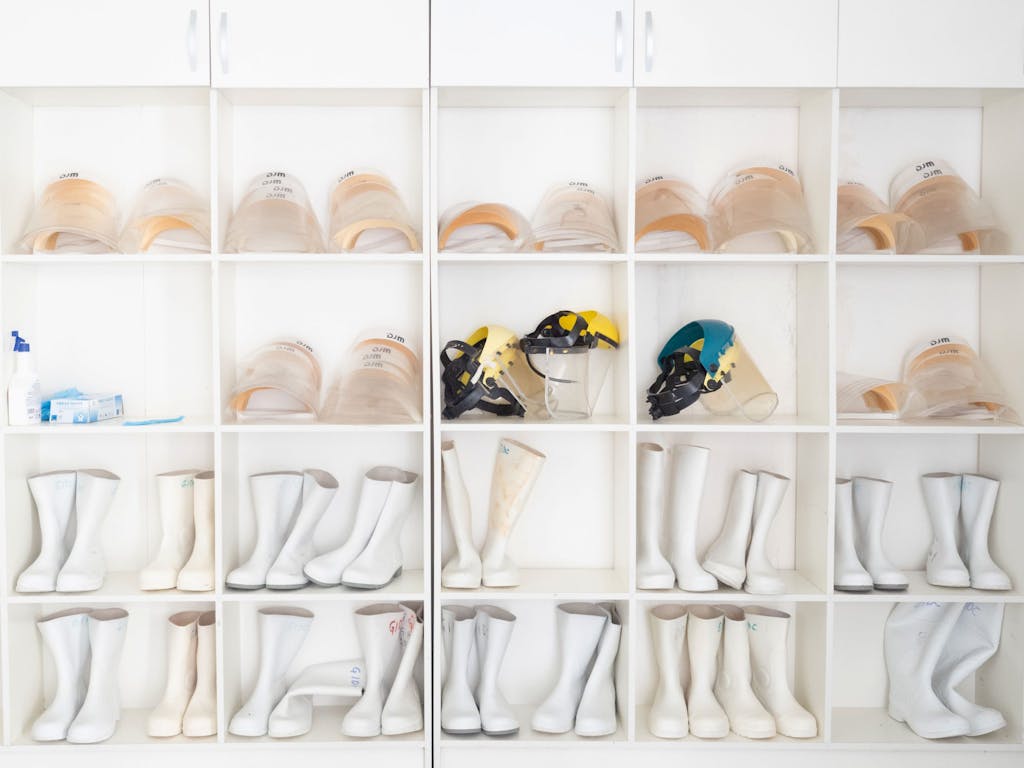
A shelf with defending gear, boots, and face guards on the Ghana infectious illness centre in Accra, Ghana. UNICEF leads the current operation for COVAX, working with producers and companions on the procurement of COVID-19 vaccine doses, as effectively as to freight, logistics and storage. photograph credit rating: Gemma Taylor / UNICEF
In September, the world Fund will host its Seventh Replenishment convention in NY metropolis the place it would name on donors to commit a minimal of $18 billion to save tons of 20 million lives between 2024 and 2026 and decrease the loss of life cost from HIV, TB, and malaria by sixty 4% in 2026 in contrast with 2020. Over the previous 20 years, the worldwide Fund has helped save forty 4 million lives and decreased the mixed loss of life cost from these illnesses by elevated than half. nonetheless, for the foremost time inside the worldwide Fund’s historic previous, key programmatic outcomes declined throughout all three illnesses in 2020 and 2021 as a outcomes of service supply, current chain, and remedy interruptions. whereas $18 billion is a extreme ask for donors, 1000’s and 1000’s of lives are on the highway. These funds are wished elevated than ever to change the trajectories of mortality and incidence for the world’s three deadliest and longest-lasting infectious illnesses.
In October, GPEI will search $4.eight billion to reinvigorate polio eradication efforts. although good progress has been made since nations throughout the globe joined forces over three a long time in the past to eradicate this insidious illness — reaching elevated than a ninety nine.9% discount in circumstances — progress is terribly fragile, and the job isn’t but performed. to this level 12 months alone, over 20 nations have reported a minimal of 1 case of polio, a sharp uptick from 2020 circumstances that is largely attributed to grave interruptions to polio immunization campaigns all by way of the pandemic.
The replenishments of these and fully different world well being multilaterals this 12 months are an alternative for governments to fortify illness prevention packages to permit them to make up for setbacks attributable to COVID-19. The lingering pandemic and fully different world crises akin to a consequence of the warfare in Ukraine have decreased many donors’ capability to subsidize illness prevention — placing even institution investments in jeopardy. If we’re to fulfill the well being-associated SDGs, the affect of every greenback want to be optimized to rid the world of illnesses which have plagued humanity for a lot too prolonged. Such investments, which play an important function in supporting current well being packages, want to be made alongside, not on the expense of, new pandemic reforms and financing.
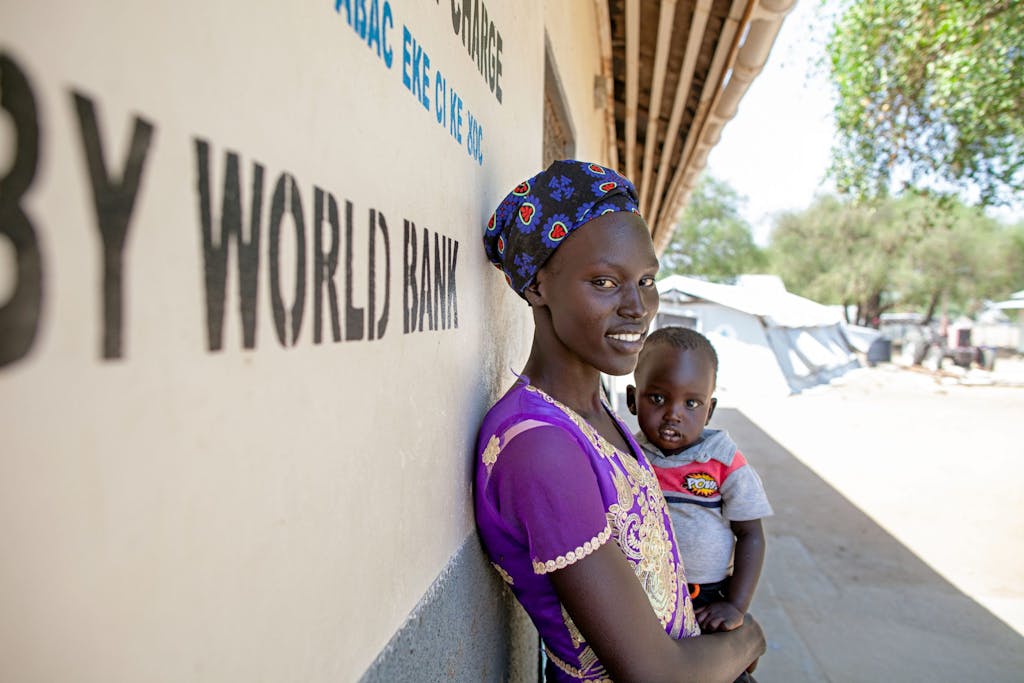
Sarah Yar is photographed collectively with her 18-month-previous son on the UNICEF/World financial institution-supported Pariak foremost well being Care Centre in Pariak in Jonglei State, South Sudan. South Sudan has amongst the numerous worst well being indicators globally with an underneath-5 mortality cost of ninety six deaths per 1,000 dwell births and seventy five% of baby deaths as a consequence of of this of preventable illnesses of diarrhoea, malaria and pneumonia. photograph credit rating: Mark Naftalin / UNICEF
Defining the path to 2025 and past
In 15 months, all by way of the identical 12 months we cross the midway level of the Sustainable enchancment goals, the UN will host one other extreme-diploma meeting on common well being safety. The financing selections that political leaders make this 12 months are a litmus take a look at on whether or not there’s ample extreme-diploma political will and dedication to chart a course in the direction of good well being and effectively-being for all.
Making these investments right now will permit communities and nations to proceed constructing resilient well being packages that will reply to rather numerous well being threats and maintain foremost well being companies even inside the face of a future pandemic menace.
The COVID-19 pandemic has proven that weak spot in a single a ingredient of the worldwide well being system — be it vaccination, surveillance, or well being care workforce — is a menace to our capability to handle, cease, and eradicate illnesses.
The window of alternative to transform how we use world investments to strengthen the packages that maintain our communities healthful, prosperous, and guarded is closing shortly. With the well being of 1000’s and 1000’s of people at stake, the expense of inaction is a lot elevated than the worth of movement.

